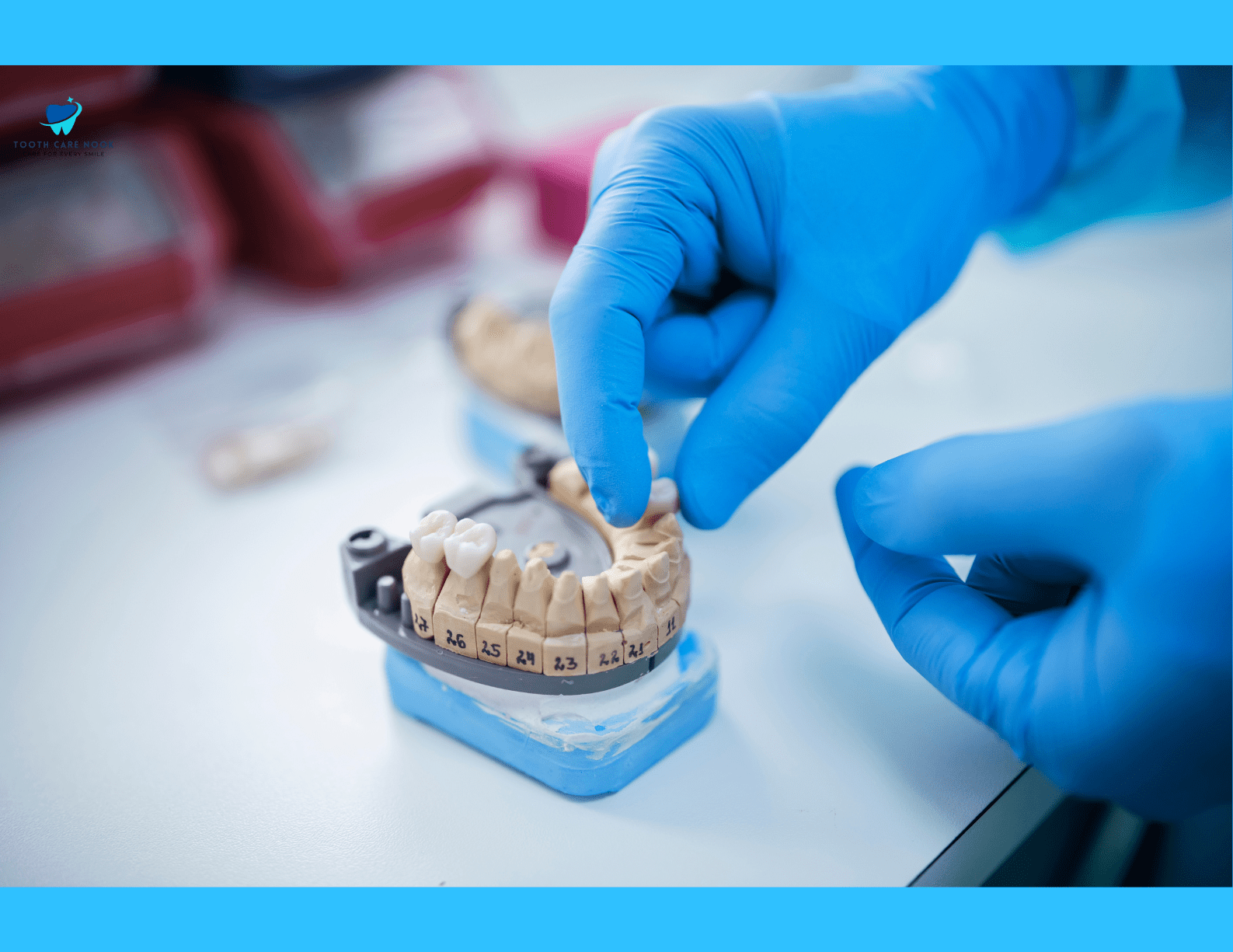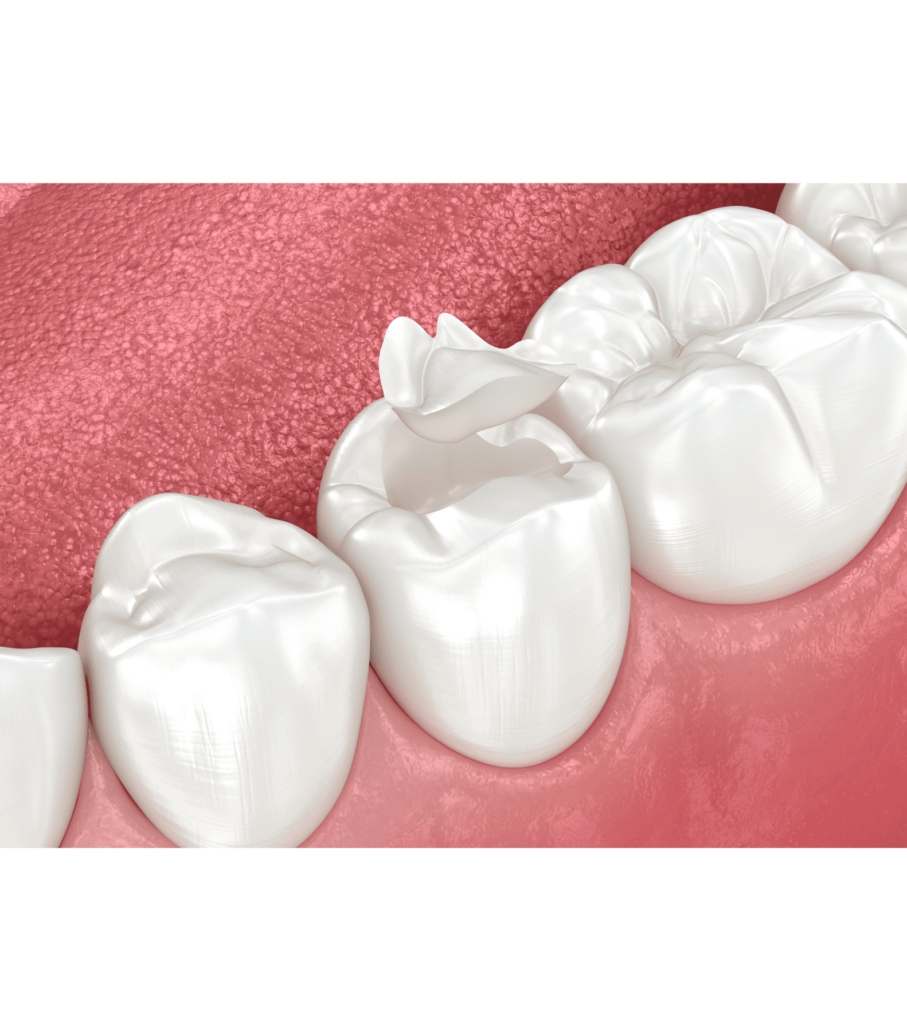What is a Dental Overlay?
A dental overlay is a prosthetic device used to cover a damaged or weakened tooth. Once placed over the tooth, it restores its strength, shape, and appearance, while also protecting it from further damage or decay.
Tooth overlays are commonly used to treat teeth undergoing extensive decay, fractures, or root canal therapy. They can also improve the appearance of misshapen or discolored teeth.
How is a Dental Overlay Done?
The process of getting a dental overlay involves the following steps:
Impression Taking:
An impression or mold of the tooth is taken using dental putty or digital scanning technology. This impression captures the exact dimensions and contours of the prepared tooth and serves as a template for creating the custom-made overlay.
Overlay Fabrication:
The impression is sent to a dental laboratory where skilled technicians use it to fabricate the dental overlay. The custom-made overlay will ensure a seamless and natural-looking restoration.
Temporary Overlay Placement:
While the permanent overlay is being fabricated, a temporary overlay may be placed over the prepared tooth to protect it and maintain functionality. This temporary overlay is made of acrylic or composite resin and is easily removed during the final appointment.
Final Placement:
Once the permanent overlay is ready, the patient returns to the dentist for the final placement. The dentist checks the fit and appearance of the overlay before bonding it securely onto the prepared tooth using dental cement.
After the overlay is bonded, the dentist polishes it to smooth out any rough edges and ensure a natural-looking appearance. The patient is then provided with instructions on how to care for their new overlay to maintain its longevity and appearance.
Why Do You Need an Overlay in Dentistry?
You need tooth overlays for the following purposes in dentistry:
Restoring Tooth Structure:
The overlay provides support and protection, preventing further damage and preserving the tooth’s function, by covering the entire visible portion of the tooth.
Protecting Dental Restorations:
Overlay in dentistry can also protect and prolong the lifespan of other dental restorations, such as large fillings or dental implants. By covering these restorations, overlays provide an additional layer of protection against wear, fracture, and decay, helping to preserve the integrity of the tooth and restoration.
Supporting Dental Bridges:
Dental overlays are used as abutments to support dental bridges, which are used to replace missing teeth. The overlay acts as a stable anchor for the bridge, ensuring proper function and stability of the dental prosthesis.
Strengthening Weakened Teeth:
Overlay in dentistry strengthens the weakened teeth, allowing them to withstand the forces of biting and chewing without risk of further damage.
Improving Tooth Appearance:
For enhancing the appearance of teeth that are discolored, misshapen, or otherwise aesthetically compromised tooth overlay plays are used.

What Are Porcelain Overlays?
Porcelain overlays are dental restorations used to repair and strengthen damaged or decayed teeth. They are made of dental-grade porcelain material, closely mimicking tooth enamel’s natural appearance and strength.
These overlays are custom-designed to fit precisely over the surface of a tooth and are bonded securely in place by a dental professional.
What is Veneer Overlay?
A veneer overlay is a thin shell of dental-grade porcelain or composite resin that is custom-made to cover the front surface of a tooth. These overlays are used to improve the appearance of teeth by enhancing their color, shape, size, or alignment.
They are a popular cosmetic dental treatment option in the United States due to their ability to create a natural-looking and aesthetically pleasing smile.
Inlay vs Overlay | Main Differences
| Inlay | Overlay |
| Fits within the top edges of the tooth. | Covers the entire biting surface or front surface of the tooth. |
| Smaller in size compared to overlays. | Larger in size. |
| Inlays are used for functional restorations in posterior teeth. | Primarily used for cosmetic enhancements in anterior teeth, but can also be used for larger restorations in posterior teeth. |
| They are less visible as they are placed within the tooth’s cusps. | It is more visible, particularly when used for cosmetic purposes on the front teeth. |
| Requires moderate tooth reduction to accommodate the inlay. | Requires minimal tooth reduction and preserves more of the natural tooth structure. |
How Long Do Dental Overlays Last?
Dental overlays can last anywhere from 5 to 15 years or more. With proper care and maintenance, overlays can provide long-lasting restoration of damaged or weakened teeth which improves both function and aesthetics for many years.

